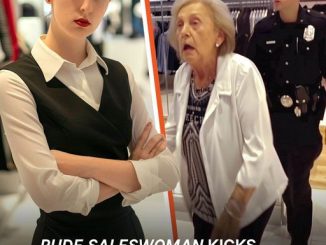
An orphan colt whose mother died shortly after giving birth has a new mom – a mare that had tragically lost her foal – thanks to the generosity of strangers and Washington State University veterinarians playing matchmaker.
Pairing an orphan foal and a nursing mare is a challenging task and one that commonly ends with failure. In this case, the connection was instantaneous.
“The mare had only been without a foal for about 24 hours,” Dr. Lisbeth Matthews, an equine medicine and surgery intern, said. “We walked her into the Veterinary Teaching Hospital and past him. He made a noise, and she went, ‘oh, there’s my foal,’ and started making noises back at him.”
It was a surprise to everyone how quickly the mare, named Shelly but affectionally called Mama by her owners, Roy and Faye Lions, accepted the colt. Equine veterinarian Jenifer Gold, who was helping to care for the foal and to supervise its introduction to the mare, said nursing mares frequently reject orphan foals, and when they don’t, the pairing process often takes days.
“She walked in and started nickering at him like it was her own baby – it was unbelievable,” Gold said. “I’ve been doing this for 20 years, and I have never seen it happen that way.”
The foal, which has been named Laredo, was admitted to the teaching hospital by his owner, Spokane resident Rachel Williams, just days after he was born when he started showing troubling digestive issues. Shortly after the colt arrived in Pullman, Faye Lions placed a call to WSU to see if the equine team was aware of any orphan colts needing a nursing mare.
“Our foal was dead, and nothing was going to bring it back, so we were hoping we could help someone else,” Faye Lions said. “It just so happened there was a foal there.”
A day later, the colt and Shelly were introduced.
“For them to be so willing to basically hand over their animal to a complete stranger after experiencing their own tragedy was pretty phenomenal,” Williams said. “I feel like in this scenario it was the worst of the worst for everybody, but there was a little bit of silver lining to the story.”
Williams is also grateful for the care and treatment she and her foal received at WSU.
“I just can’t even find words to say how great the veterinarians at WSU were,” she said. “They went above and beyond. I am just happy I ended up at WSU. I am so glad we were able to match those two up – it is kind of a miracle.”
Shelly will live with Williams until the colt is ready to be weaned, likely in six months, before she will return to her home in Kamiah, Idaho.
“It will be tough to say goodbye because you just naturally start to bond with animals, and she has kind of been my lifesaver,” Williams said. “It will be bittersweet for sure, but I am sure her owners will be happy to have her back.”
During the spring, the equine team at WSU typically sees at least a handful of orphan foals. Equine medicine specialist Dr. Macarena Sanz said orphan foals can be fed a powdered milk formula designed for horses, but those raised by humans typically develop behavioral issues that can become problematic as the animal matures.
“They turn out to be socially weird, have no understanding of personal space, and they are more difficult to train,” WSU equine veterinarian Macarena Sanz said. “The fact that this orphan foal has a mare is really going to make a difference.”
Sanz strongly encourages owners to immediately call their veterinarian if a foal is orphaned, as early care is critical to the animal’s survival.
This story touched my heart – this shows us that we are human and we should help each other
In the heart of the bustling mall, amidst the mundane hum of shoppers and ringing cash registers, my routine shopping excursion spiraIed into a gripping tale of intrigue. Out of nowhere, a mysterious figure, a girl with an air of enigma, approached me. With a familiarity that struck me as uncanny, she enveloped me in an unexpected embrace and whispered urgently of imminent danger.
Suddenly, the ordinary became extraordinary as paranoia gripped me. Two shadowy figures lurked in the periphery, their intent unknown but undoubtedly malevolent. The hairs on the back of my neck prickled with apprehension as I navigated the Iabyrinth of shops, veering off course to evade our unseen pursuers.
This chance encounter with the enigmatic Lily unfolded like a scene from a suspense thriller, her quick thinking and audaciousness a beacon of hope amidst the chaos. She revealed herself as a fellow mall-goer, inadvertently drawn into the web of intrigue when she overheard cryptic snippets of conversation from the ominous duo.
Together, Lily and I embarked on a high-stakes game of cat and mouse, deciphering cryptic clues and weaving through the throngs of shoppers in our quest for safety. Each turn of events felt like a puzzle piece, fitting into a Iarger, ominous picture of danger and deception.
Seeking refuge with the mall security, we found temporary sanctuary amidst the chaos. Their swift intervention and the involvement of law enforcement underscored the gravity of the situation. In that moment, an unspoken bond formed between Lily and me, forged in the crucible of danger and uncertainty.
As the mall gradually returned to its usual rhythm, the memory of that fateful day lingered like a haunting specter. It was a stark reminder of life’s unpredictability and the resilience found in unexpected alliances. Through adversity, Lily and I discovered the strength that Iies in solidarity, a testament to the unwavering power of women united in the face of adversity.




Leave a Reply